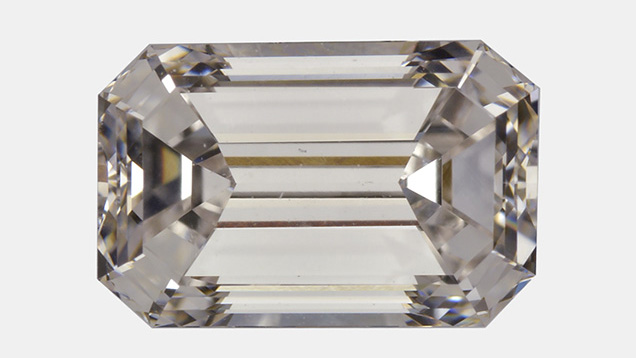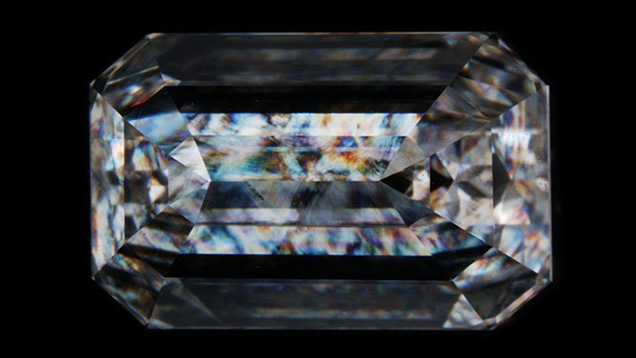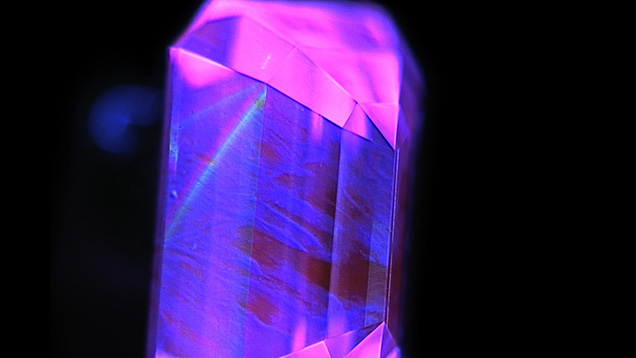Large Pinkish Brown CVD Synthetic Diamond


Figure 2. Viewed under crossed polarizers, this synthetic diamond shows mottled strain, but no tatami strain, consistent with its CVD growth origin. Photo by Troy Ardon.

Figure 3. DiamondView imaging remains one of the most reliable methods for confirming a CVD synthetic diamond. This image shows distinctive growth patterns. Image by Sally Eaton-Magaña.
As the vast majority of CVD synthetic diamonds submitted to the lab weigh less than one carat, this sample was unusual for its size, as well as its color grade of Faint pinkish brown. This is the first colored CVD synthetic diamond examined by GIA that did not merit a “Fancy” modifier, but instead fell in the Faint to Light range. While pink CVD-grown synthetics have been documented, in most cases the color was generated by post-growth treatment. Here the pinkish color seemed solely related to the growth process, with no subsequent treatments (HPHT annealing, irradiation, and then annealing) coming into play.



